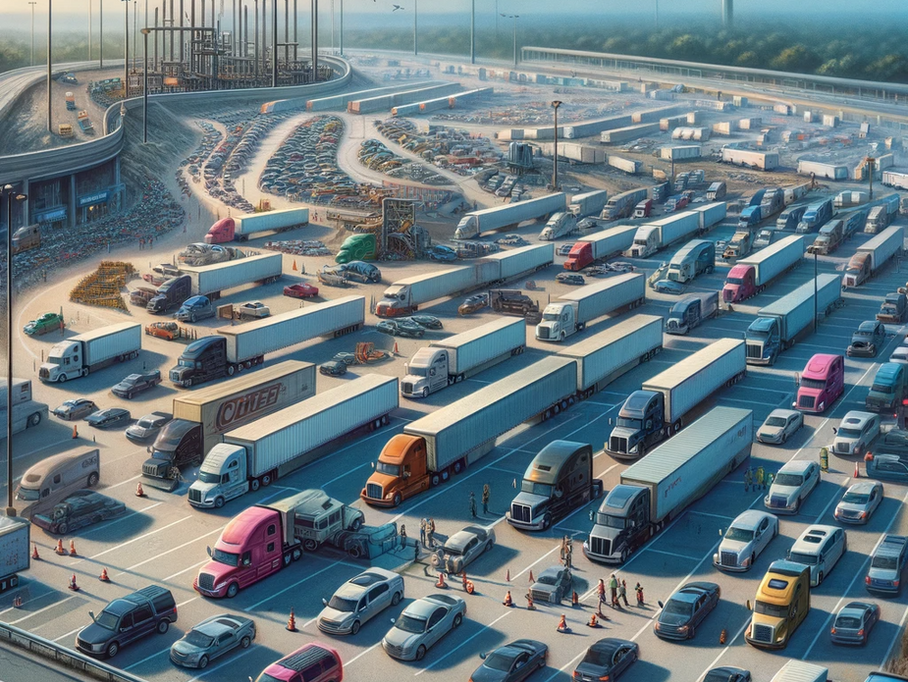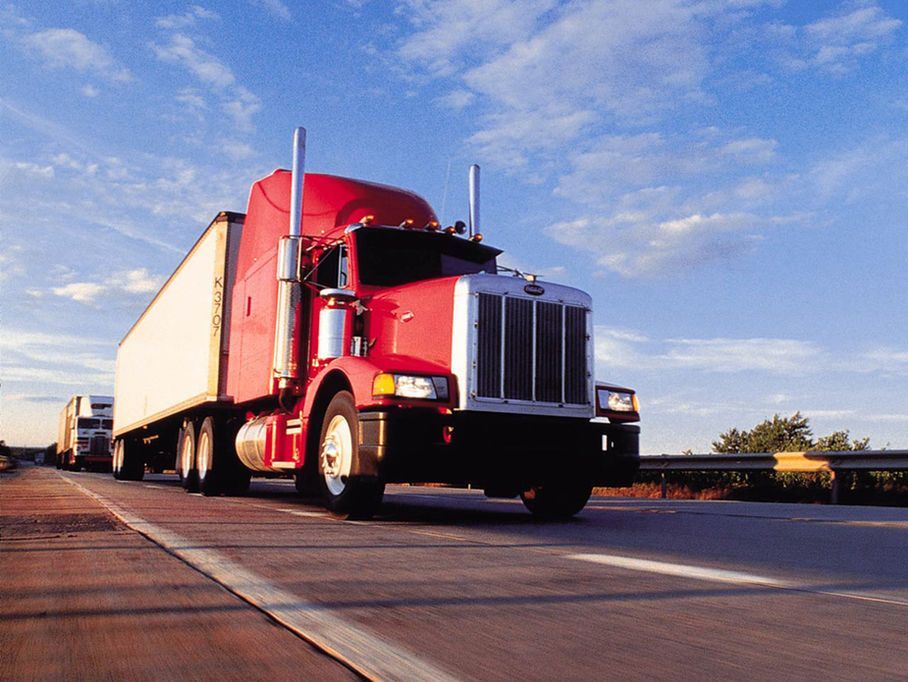On the road again blog

By Brian Grimes
•
26 Dec, 2023
The Stark Reality of Truck Parking Shortage The truck parking shortage has become a critical issue in Arkansas, reflecting a broader nationwide challenge in the trucking industry. According to the Truckload Carriers Association, there is only one truck parking space for every 11 drivers. This staggering ratio underscores the dire need for more parking facilities. The U.S. Department of Transportation reports that a whopping 98% of drivers regularly face difficulties in finding safe parking. This shortage not only causes inconvenience but also has economic repercussions, with drivers losing an average of 56 minutes of drive time per day, which translates to about $5,500 in lost compensation annually, equating to a 12% cut in annual pay. Federal and State Responses In response to this growing crisis, the federal government has stepped up its efforts. U.S. Secretary of Transportation Pete Buttigieg announced that over $2.2 billion from the RAISE discretionary grant program will be allocated to 162 infrastructure projects nationwide, including $28 million specifically for truck parking projects. This program, expanded under the Bipartisan Infrastructure Law, aims to support both rural and urban communities, with half of the funding allocated to each. Specific Projects and Legislative Actions Specific projects funded under the RAISE program include the construction of truck parking facilities in Louisiana, Texas, and Michigan, showcasing diverse and targeted approaches to tackling the parking shortage in various states. Additionally, HR2367, the “Truck Parking Improvement Act,” was introduced to provide for the construction of commercial motor vehicle parking at both existing and new parking areas. This bill, which includes a $755 million grant program for truck parking expansion, was passed out of committee with significant support. Safety and Economic Implications The Federal Motor Carrier Safety Administration Administrator Robin Hutcheson emphasized the safety risks associated with the parking shortage, noting that driver fatigue, often due to inadequate rest, is one of the leading causes of truck crashes. The lack of safe and accessible parking spaces is not just an inconvenience but a critical safety issue. Local Efforts in Arkansas In Arkansas, efforts to address the parking shortage are underway. The Arkansas Department of Transportation (ArDOT) has been actively involved in expanding truck parking facilities. A notable project is the new 84-space lot along Interstate 40 in West Memphis, which is expected to alleviate some of the parking pressure in an area through which over 20,000 commercial trucks pass daily. The Broader National Perspective Nationally, other states like Arizona and Nevada are also undertaking significant projects to enhance truck parking facilities. These efforts are part of a broader strategy to improve highway safety and, in turn, support the efficiency of the supply chain. A startup company in Nevada, We Realize Inc., has embarked on an ambitious project to create nearly a million parking spots around the country over the next seven years, demonstrating the private sector's role in addressing this crisis. Moreover, industry leaders like Love’s Travel Stops are planning major expansion work, adding new stores and truck parking spaces across the nation. This expansion is indicative of the growing recognition of the parking crisis and the concerted efforts by both government and private sectors to provide solutions. Conclusion The truck parking crisis in Arkansas and across the United States is a multifaceted issue that requires coordinated efforts from both governmental bodies and private entities. While the challenge is significant, the ongoing initiatives and investments demonstrate a commitment to addressing this critical issue, with the aim of improving safety, driver well-being, and overall supply chain efficiency. As these efforts continue to unfold, there is cautious optimism that the truck parking shortage will be significantly mitigated, benefiting the trucking industry and the broader economy.

By Brian Grimes
•
17 Dec, 2023
The Freight Recession and Its Implications As the trucking industry navigates what economists have termed a "freight recession," the health of the U.S. economy emerges as the industry's top concern. This term aptly captures the challenges faced by the industry, including decreased freight demand and overall economic instability. The American Transportation Research Institute (ATRI) underscored this in its 19th annual Top Industry Issues report, noting a significant rise in concern about the economy within the trucking sector. The economic challenges faced by the trucking industry in 2023 are not just rooted in market dynamics but also in broader political factors. A significant political factor contributing to these issues is the overall economic policy, which has led to high inflation and increased interest rates in the United States. This economic environment has brought about a wave of high expenses, affecting everyone from individual consumers to major businesses. For the trucking industry, this has translated into increased costs for essentials such as fuel and maintenance, and difficulties in expanding operations due to higher borrowing costs. The political decisions that influence macroeconomic policies, such as interest rates and inflation control measures, directly impact the trucking industry. The increase in interest rates, designed to combat inflation, has aggravated the financial system, making borrowing more expensive and raising capital prices. This has resulted in a noticeable strain on the trucking sector, affecting pricing mechanisms and causing setbacks in other key industries like housing, retail, and manufacturing. The downturn in job figures since the beginning of the COVID-19 pandemic further exacerbates the situation, marking a significant downturn in the economic landscape. In summary, the political landscape, particularly economic policies and decisions, plays a crucial role in shaping the challenges faced by the trucking industry, influencing everything from operational costs to market demand and industry expansion opportunities.(SEE LINK FOR MORE INFO) FTR: TCI improved in September, but trucking conditions remain tough | FleetOwner The Underlying Economic Factors Rising Inflation: Inflation has been on the rise both at the consumer and producer levels, impacting every aspect of the trucking industry. Increasing costs have squeezed margins and made operations more challenging. The trucking industry, in particular, feels the pinch as inflation drives up the costs of essentials like fuel and maintenance. Interest Rates and Borrowing Costs: To combat inflation, interest rates have been increased, consequently raising the cost of borrowing. This impacts the trucking industry's ability to invest in new vehicles and technology, further compounding the economic challenges it faces. Shift in Consumer Behavior: There has been a noticeable shift in consumer behavior from purchasing goods (which require shipping) to a more balanced consumption of goods and services. This shift has led to a decline in pricing, especially at the contract and spot levels, directly affecting the trucking industry's revenue streams. Fuel Price Volatility: Diesel prices, a critical component of trucking expenses, have seen fluctuations. While there was some relief in the fall, prices soared in the spring and summer due to increased demand and reduced supply, partly attributed to geopolitical factors such as decisions by Russia and OPEC to cut oil production and disruptions in Venezuela, a major producer of heavy crude refined into diesel. Navigating Through Economic Turbulence In response to these challenges, the trucking industry is adopting various strategies: Cost-Effective Operations: Companies are focusing on making their operations more cost-effective. This includes investing in fuel-efficient technologies, optimizing routes, and leveraging telematics for operational efficiency. Adapting to Market Changes: The industry is also adapting to the shifting market by diversifying services and exploring new markets to stabilize revenue and reduce dependency on volatile sectors. Industry Advocacy and Policy Engagement: Engaging with policymakers is another critical response. The industry is advocating for policies that support its growth and sustainability, including fair fuel pricing and infrastructure improvements. Conclusion The trucking industry's struggle with economic challenges in 2023 highlights its crucial role in the global supply chain and its resilience in the face of adversity. As the industry steers through economic uncertainty, its response will shape not only its future but also have a significant impact on the broader economy. The road ahead is fraught with challenges, but the industry's adaptability and strategic responses will be key to navigating these economic headwinds.

By Brian Grimes
•
15 Dec, 2023
The Ageing Dilemma The trucking industry, a critical cog in the economy's wheel, is currently grappling with a significant challenge: the aging of its vehicle fleet. This phenomenon isn't just a matter of a few old trucks; it reflects broader economic trends and has far-reaching implications. Economic Pressures and Fleet Decisions Class 8 trucks, the workhorses of the industry, have seen robust production rates. However, the economic landscape is shifting. Economic slowdowns, coupled with high-interest rates, are expected to dampen the demand for new trucks. This economic pressure is causing fleet operators to rethink their strategies. Delaying New Purchases Faced with financial uncertainties, many trucking companies are choosing to delay the purchase of new trucks. This decision is not taken lightly, as new trucks represent significant investments. However, in an uncertain economic environment, preserving capital becomes a priority. Extending Trade Cycles In addition to delaying new purchases, fleets are extending the trade cycles of their vehicles. This means trucks are being kept in service for longer periods than initially planned. While this helps mitigate immediate financial outlays, it introduces other challenges, particularly concerning maintenance and repair. How long will used trucks be a buyer’s market? | Commercial Carrier Journal ( ccjdigital.com )

By Brian Grimes
•
14 Dec, 2023
The Current Landscape The trucking industry, often seen as the backbone of the American economy, is navigating through turbulent times. The year 2023 has been particularly challenging, marked by a phenomenon that industry insiders have termed a "freight recession." This term refers to a period where there is an imbalance in the supply-demand equation - an oversupply of trucks and drivers juxtaposed against a dwindling demand for fleet services. The Case of Yellow Corporation One of the most telling indicators of this tumultuous period is the bankruptcy of Yellow Corporation, a mainstay in the trucking world. This development has sent ripples across the industry, underscoring the volatile nature of the transportation market. Yellow Corporation's filing for Chapter 11 bankruptcy is not just a singular event but a clear signal of the broader challenges that the industry is grappling with.(SEE LINK FOR THE STORY) https://www.reuters.com/business/autos-transportation/trucking-firm-xpo-buy-bankrupt-yellows-service-centers-870-mln-2023-12-05/ Factors Contributing to the Recession Several factors have contributed to this freight recession. The ebb and flow of the global economy, fluctuating fuel prices, and changes in consumer demand patterns have all played a role. Moreover, the surge in e-commerce, which initially provided a boost to the trucking sector, has now led to an oversaturation of services, contributing to the current predicament. The Domino Effect The implications of the freight recession are far-reaching. Companies that had expanded their fleets during more prosperous times are now finding themselves with excess capacity. This oversupply, in turn, leads to increased competition and downward pressure on freight rates, squeezing profit margins for many operators. The Silver Lining However, it's not all doom and gloom. Challenges often bring opportunities for growth and innovation. The current market conditions are forcing companies to reevaluate their strategies, streamline operations, and adopt more sustainable business models. Embracing technology, optimizing routes, and focusing on customer-centric services are some ways companies are adapting to the new normal. Looking Ahead As the industry continues to navigate these choppy waters, the resilience and adaptability of trucking companies will be key. The situation underscores the need for strategic planning and a flexible approach to manage the uncertainties of the market. The freight recession is indeed a stern test, but it also presents an opportunity for the trucking industry to emerge stronger, more efficient, and more attuned to the evolving demands of the economy. Conclusion The freight recession in the trucking industry is a reminder of the cyclical nature of business and the importance of preparedness for downturns. As the industry looks towards the future, the lessons learned during this challenging period will undoubtedly shape its trajectory for years to come. The road ahead might be uncertain, but one thing is clear: the trucking industry's ability to adapt and innovate will be crucial in steering through these challenging times.

By Brian Grimes
•
12 Dec, 2023
In the world of commercial trucking, where every mile counts, the state of your fuel tank can make all the difference. Let's delve deeper into why keeping your fuel tank full is not just a good practice but essential for the well-being of both the truck and driver. 1. Protecting Your Engine: Beyond Avoiding Empty Low fuel levels can be more damaging than many realize. Running close to empty risks fuel starvation, where the engine fails to get enough fuel to function. This can lead to unexpected stalling, particularly hazardous on fast-moving highways or in remote locations. Moreover, operating on low fuel consistently can strain the fuel pump and engine, leading to wear and potential failure. The costs of repairs, towing, and downtime can be substantial, not to mention the safety risks involved. 2. Safety and Reliability in Unpredictable Situations A full tank offers peace of mind. It prepares you for unexpected detours or delays, especially in areas where fuel stations are few and far between. In extreme weather conditions, the ability to keep driving without stopping for fuel is not only convenient but could be life-saving. Moreover, a full tank reduces the risk of being stranded, which poses a significant safety risk for the driver and can create traffic hazards. 3. Maximizing Fuel Efficiency A lesser-known fact is that a fuller fuel tank can contribute to better overall fuel efficiency. When fuel levels are low, the engine may experience uneven fuel delivery, causing it to work harder and use more fuel. Keeping the tank more full ensures a consistent flow of fuel, leading to smoother engine operation and potentially better mileage. 4. Minimizing Contaminant Impact Fuel tanks can accumulate sediments and contaminants over time. When the fuel level is low, these contaminants are more likely to be drawn into the fuel system, potentially leading to clogs and damage. Regular refueling helps in diluting these contaminants, reducing the risk of fuel system issues. 5. Preparedness for Emergencies In the event of emergencies like severe weather, natural disasters, or unexpected road closures, having a full tank can be crucial. It enables drivers to adapt to changing situations, like rerouting or extending the journey, without the immediate worry of finding the next fuel station. 6. Regulatory Compliance For commercial vehicles, especially long-haul trucks, adhering to fuel level regulations is vital. Certain areas mandate minimum fuel levels for safety and environmental reasons. Keeping the tank full ensures compliance with these regulations, avoiding potential fines or legal issues. Conclusion Maintaining a full fuel tank in commercial trucks is a crucial aspect of vehicle management. It goes beyond the inconvenience of running out of fuel, impacting the vehicle's health, driver safety, operational efficiency, and regulatory compliance. For truck drivers and fleet managers, this practice should be a top priority for ensuring safe, efficient, and uninterrupted operations. Remember, in commercial trucking, the smallest details often make the biggest difference.

By Brian Grimes
•
02 Dec, 2023
When we talk about road safety, our minds often drift to high-speed highways or bustling city streets. However, a scenario often overlooked is the roadside repair of semi-trucks. These giants of the road, when pulled over for repairs, present unique hazards to pedestrian drivers. This article aims to shed light on how drivers can navigate these situations safely and responsibly. Understanding the Risks Roadside repairs of semi-trucks are more common than one might think. These repairs can create unexpected obstacles and hazards, particularly for pedestrian drivers. The risks range from limited visibility around these large vehicles to potential hazards from moving machinery and tools. It's crucial for drivers to be aware of these risks and act accordingly. Best Practices for Pedestrian Drivers 1. Stay Alert Always be aware of your surroundings. This is particularly crucial when you're driving near a semi-truck undergoing repairs. Unexpected movements or workers crossing the road can occur, and heightened alertness is your first line of defense. 2. Maintain a Safe Distance Keep a generous distance between your vehicle and the repair site. This buffer zone ensures you have enough space to react if something unforeseen happens, like a tool rolling onto the roadway or a sudden movement from the truck. 3. Reduce Speed As you approach a semi-truck repair scene, decrease your speed. Slowing down gives you more time to assess the situation and react appropriately. It also signals to the repair crew that you are being cautious and respectful of their workspace. 4. Follow Signage and Signals Temporary traffic signs or signals are often placed near roadside repairs. These might include cones, flashing lights, or warning signs. Adhering to these guides is not just about legality; it's about safety. 5. Be Patient Understand that repairs can cause delays. Being patient and not letting frustration take over is key. Remember, the faster and safer the repair crew can work, the sooner the road will be clear again. Respecting Repair Crews The individuals who repair semi-trucks are skilled professionals performing a vital service, often in challenging conditions. Respecting their space and work is paramount. Simple acts like avoiding unnecessary honking or loud music can make their work environment safer and more efficient. Legal Considerations Be aware of local laws regarding roadside repairs. Many regions have 'move over' laws requiring drivers to change lanes or slow down when approaching a repair scene. Familiarizing yourself with these laws not only keeps you compliant but safe as well. Conclusion Safety on the road is a shared responsibility. By following these guidelines, pedestrian drivers can contribute to a safer environment for everyone - themselves, other drivers, and the hardworking repair crews. Let's all do our part to keep the roads safe.

By Brian Grimes
•
30 Nov, 2023
Transporting goods across the country, truck drivers are the lifeline of our economy. However, the safety of these journeys hinges on a crucial yet often overlooked aspect: daily walk-around checks on their trucks and trailers. Neglecting these checks can have dire consequences, not just for the drivers but for everyone on the road.

By Brian Grimes
•
25 Nov, 2023
Amidst the festivities, let's turn our collective gaze to a group of modern pilgrims navigating a different kind of journey – the truckers on our roads. Their odyssey, marked by sacrifice and solitude, resonates with biblical narratives, beckoning us to recognize the profound Christian virtues encapsulated in their tireless pilgrimage. The Pilgrimage of Solitude: Akin to Spiritual Sojourns In the tapestry of our celebrations, truckers tread a solitary path. Their sacrifice of festive gatherings mirrors the spiritual sojourns described in biblical narratives. As they traverse the open road, it becomes our Christian duty to recognize and appreciate their sacrifice, embracing a shared responsibility for their well-being. Loneliness as a Spiritual Hymn: An Enduring Endeavor In the jubilant melodies of the season, the hum of truck engines becomes a spiritual hymn of endurance. This enduring endeavor isn't just theirs alone. As fellow travelers in the journey of life, we are called to listen to this silent symphony and extend fellowship, echoing the Christian virtue of compassion and shared humanity. Pilgrimage Against Time: Navigating Temporal Constraints For truckers, the holiday rush unfolds as a pilgrimage against time. The urgency of time-sensitive deliveries and the challenges of traffic become modern manifestations of the biblical narrative. It beckons us to recognize the sacred within these temporal constraints, urging patience, understanding, and a shared responsibility in ensuring their journey is as smooth as possible. Acknowledging the Sacrament of Sacrifice As we indulge in festive feasts and gather with loved ones, let us not forget the sacrament of sacrifice unfolding on the road. The trucker's journey becomes a profound expression of sacrifice, and in our Christian duty, we extend not just gratitude but fervent prayers for their safe passage. Extending Christian Virtue on the Road In this season of joy and celebration, recognizing the sacrifices of truckers becomes a testament to our shared Christian duty. Our responsibility doesn't end with acknowledgment; it extends to fostering an environment that values and supports these modern pilgrims on their journey. Let us, as a collective community, embrace the pilgrimage of truckers with Christian virtue. In doing so, we contribute to a harmonious journey, embodying the principles of compassion, shared responsibility, and gratitude. #ChristianVirtue #TruckersJourney #SharedResponsibility

By Brian Grimes
•
19 Nov, 2023
As drivers, we're all too familiar with the unpredictable nature of the road. From blinding rainstorms to dense fog and the black of night, visibility plays a pivotal role in ensuring a safe journey. In this blog post, we'll delve into the critical importance of visibility and how it forms the cornerstone of roadside safety in all conditions. The Unseen Dangers of Poor Visibility: When visibility is compromised, the risk of accidents skyrockets. Poor weather conditions, low-light scenarios, or even a dirty windshield can drastically reduce a driver's ability to anticipate and react to potential hazards. This underscores the significance of clear lines of sight not only for your vehicle but also for those sharing the road. Enhancing Visibility: Practical Tips for Safer Journeys: Wipers and Lights: Regularly check and replace windshield wipers and ensure all lights are in working order. These simple measures can make a world of difference during adverse weather conditions. Clean and Clear: Keep your windshield, mirrors, and headlights clean. Road grime and dust can accumulate, hindering visibility. Regular cleaning not only maintains the aesthetics of your vehicle but also contributes significantly to safety. Adjusting Speed: In challenging weather conditions or low-light situations, slowing down is a simple yet effective strategy. Reduced speed provides more reaction time and minimizes the impact of reduced visibility. Use of High Beams: In appropriate conditions, utilizing high beams can extend your field of vision. However, it's crucial to dip them when approaching other drivers to avoid blinding them. Fog Lights: If your vehicle is equipped with fog lights, use them in foggy conditions. They are designed to cut through the fog and improve visibility close to the ground. Advanced Driver Assistance Systems (ADAS): Consider vehicles equipped with ADAS, which includes features like lane departure warnings and collision avoidance systems. These technologies leverage sensors and cameras to enhance overall visibility and safety. Southland Breakdown's Commitment to Visibility and Safety: At Southland Breakdown, we recognize that visibility is a non-negotiable factor in ensuring the safety of every driver on the road. Our commitment goes beyond providing expert roadside assistance; we strive to empower drivers with knowledge that enhances their safety measures. Through our blog and various initiatives, we share insights, tips, and resources aimed at making every journey a secure and visible one. Visibility is the linchpin of roadside safety in all conditions. By prioritizing a clear line of sight, drivers can mitigate risks and navigate the roads with confidence. Whether it's routine vehicle maintenance or adopting advanced safety technologies, investing in visibility translates to an investment in the safety of every journey. At Southland Breakdown, we invite you to join us in fostering a culture of heightened awareness and safety on the roads. After all, a clear path ahead ensures a safer and more enjoyable travel experience for everyone. Safe travels!


